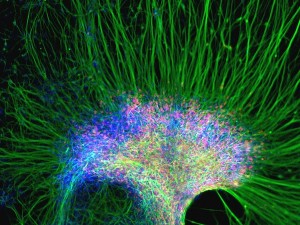- A recent study indicates the selective breeding of dogs hasn’t just changed their appearance, it’s also changed their brains by causing rotation and reorganization most notable in brachycephalic dogs like pugs, some mastiffs, bulldogs, etc. The position of the olfactory lobe has dramatically moved in these dogs, possibly affecting their sense of smell, which is comparable to changing a human’s sense of sight. It’s unknown at this point if these changes in the brain have led to changes in behavior. (You can also read the original journal article on the study at PloSOne.)
Emotions
- Emotions help animals make decisions in a way similar to humans.  For example, animals and humans in a negative emotional state (anxiety, fear) “tend to judge ambiguous stimuli negatively.”  If anxious, something ambiguous like a rustling noise in the grass is judged negatively as a predator or danger of some kind.  Likewise, animals and humans in a positive emotional state tend to judge something ambiguous like rustling noise in the grass in a positive way as prey or reward of some kind.  It seems to me this could have interesting bearing on training methods, for example, the effects of coercive training versus operant conditioning such as clicker training. (You can aslo read the original journal article on this study at the Royal Society of Biological Sciences.)
Stem Cell Therapy
- More and more, stem cell therapy is becoming an option for our animals. A process that used to take 3-4 days, can now be done in about 4hrs. if clinics can process the stem cell in-house.  About a tablespoon of the animal’s own fat is removed, then it is treated to stimulate the stems cells, and is injected back into the animal.  Numerous dogs are having the treatment for arthritis and pain—Bentley in New Jersey, in McIntyre in Georgia, Samantha in Pennsylvania, and  Eric in New Zealand.  A new fund, Frankie’s Fund, has just been started to help continue the study feline stem cell therapy at Colorado State University for the treatment of diseases like chronic renal failure, a very common disease in cats.
